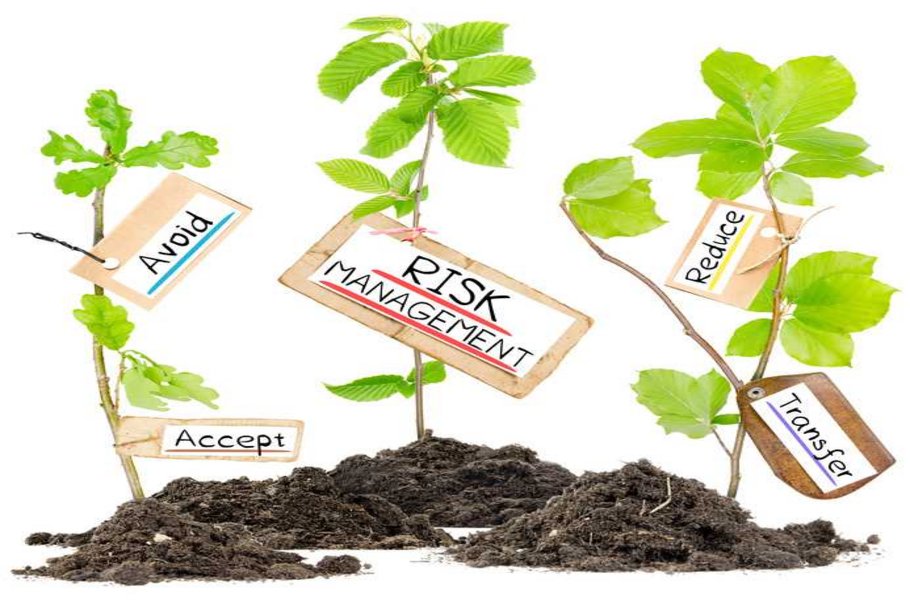Future opportunities and risks play a large part in determining the value of a company. But looking at company valuation in practice, we can see that from the CAPM perspective a sound risk and opportunity analysis is not essential, as the beta factor is simply used as a measure of risk. Based on the CAPM hypothesis, only those systematic risks expressed in the beta factor are considered relevant in terms of valuation. The consequences of systematic – and also undiversified non-systematic – risks are ignored when calculating the probability of insolvency and thus the terminal value. It is precisely these risks that prevent companies from existing forever. The possibility of insolvency, which stops the cash flow to the owners, and the indirect costs of bankruptcy illustrate how relevant non-systematic risks are to valuation and highlight the danger of neglecting them during the analysis when using the CAPM in practice. Ultimately, we also need to ask whether the beta factors derived from historic data even adequately represent the systematic risks.
Future opportunities and risks play a large part in determining the value of a company. However a look at the world of company valuation shows that risk is reduced to a single variable, known as the beta factor. Does this not massively trivialise the complexity of valuing companies?
Prof. Leonhard Knoll: Company valuation is always about reducing complexity and every model is a simplified representation of reality. In the end the crucial question is whether the simplifications made are appropriate in terms of the goal being pursued.
The beta factor, which incidentally is not used on its own but is combined with the market risk premium to produce an overall view of risk, is the pleasingly simple result of a far from trivial (Nobel prize winning) modelling process. For listed companies with diversified shareholders, criticism cannot be aimed at the simple process of analysing risk, least of all when uncertainty is otherwise given only cursory treatment in company valuation. You only have to think of the estimates of future payment surpluses, which are actually intended to be empirical values, but in practice are at best modal values and in many cases are based on nothing more than gut instinct. If we want to tackle trivialisation in company valuation, the beta factor is not the place where we should start.
The established methods in company valuation are largely based on theories that assume perfectly competitive capital markets, for example the Capital Asset Pricing Model (CAPM). But we have known for a long time that capital markets are anything but efficient. Does giving up the fiction of perfectly competitive markets not require consistent consideration of private and individual preferences (for example using risks)?
Prof. Leonhard Knoll: What happens when markets are not perfectly competitive depends on the nature of that imperfection. For example, the general state marginal price model, espoused by Hering and others in Germany, takes into account the corresponding restrictions. However, as with other approaches the price you have to pay for a comprehensive analysis quickly becomes clear – meeting significant information needs and considering various individual requirements if more than one person is involved.
For various reasons, in the capital market and in the academic world the dominant method is to accept idealised modelling over more realistic calculation programs and algorithms, which allow any number of variations from perfectly competitive markets and fungibility of properties using equilibrium prices, but demonstrate the weaknesses I have outlined.
In practice, the beta from a peer group is frequently used, even though it can be shown that identical or similar betas adjusted for the capital structure cannot be attributed to the same "operational risk". Why are peer group betas used in spite of these weaknesses?
Prof. Leonhard Knoll: In contrast to a Modigliani/Miller type capital structure analysis, consideration of the so-called "operational lever", which has its roots in cost accounting, has tended to lead a niche existence in terms of capital market and valuation theory. In addition, the availability of information for individual cases in practice is dramatically worse. With all the acknowledged problems, in the age of modern databases capital structure adjustment is a piece of cake compared to the work required to reliably determine the cost structure.
Of course, it would be easier and better to use the valuation object's own beta, but this often results in undesirably low values, and causes lots of hand-wringing in an attempt to find (pseudo) arguments for shifting to higher surrogate values.
What other weaknesses do you think are involved in using peer group betas or beta surrogates?
Prof. Leonhard Knoll: First of all, the reversal of the model's logic. According to the CAPM, companies are (approximately) identical if they have an (approximately) identical beta. The model leaves the basis for this purely stochastically expressed comparability open – if an Internet bookshop has the same beta as a steel producer, the two are perfect substitutes from an investor's perspective. Using a surrogate assumes identity based on other considerations and assigns a company an incorrect beta on this basis.
The result of this would not be harmful provided most of the criteria used, particularly industry affiliation, actually had a reasonable expectation of accuracy for a valuation object's beta. In 2013, in conjunction with K. Zeugner and R. Göb (see Zeugner, K./Göb, R./Knoll, L.: Branchenindex und systematisches Risiko [Industry Index and Systematic Risk], in: ZBB - Zeitschrift für Bankrecht und Bankwirtschaft, 25th volume (2013) book 1, p. 39-60] I published a study of German industry indices, and in terms of these expectations the results were extremely sobering.
To date, this has had no serious consequences, as a valuer who has subscribed to an expensive company database that can be used to conveniently determine a peer group beta, will not consider any independently calculated alternative methods or the valuation object's own beta, which often has a lower result that, as I have mentioned, he and/ or the client will not like.
Is it plausible that when using the CAPM the calculation of expected returns and thus the beta factor will only include systematic risks? These are derived from historic price trends on the stock market. This assumes that the capital market is at least as well informed of a company's risk situation as the company itself.
Prof. Leonhard Knoll: This conclusion is obvious but once again leads back to the issue of idealised modelling. With reference to the answers to the second question above, I think it's the lesser of two evils to follow the CAPM for listed companies if we want to determine the value for diversified free float shareholders. However, if we are talking about non-diversified shareholders in non-listed SMEs, I would tend to think that a different method is appropriate [see Knoll, L.: KMU-Bewertung: Kapitalmarktorientierte Risikoberücksichtigung ohne Börsennotiz und Diversifikation? [SME Valuation: Capital Market Based Risk Consideration Without Stock Market Listing and Diversification?], in: RWZ 2010, p. 365-371]. Nevertheless, in this case you need to openly admit to a heuristic method and not just proclaim the merits of "models" that are "better" than the CAPM.
Both in practice and among academics, there is currently an intensive discussion about the handling of country risks in international company valuation [for example, see Kruschwitz/ Löffler/Mandl: Damodarans Country Risk Premium – und was davon zu halten ist [Damodaran's Country Risk Premium - And What To Make Of It], in: WPg 2011, p. 167 onwards]. The IDW has published a statement on consideration of country risks in company valuation. The main accusation levelled at Damodaran is that he attempts to rescue the CAPM by modifying it. The traditional CAPM incorrectly estimates expected returns for companies from emerging markets. How do you rate Damodaran's concept of "country risk premiums"?
Prof. Leonhard Knoll: The CAPM is a single factor model. Introducing an additional factor to determine returns is not a modification, it is moving to an alternative method. The fact that this kind of multi-factor model should be rejected from a conceptual perspective was proved back in the 1990s in association with the APT, theoretically the most promising competition for the CAPM. Of course that still applies, even though the APT and other multi-factor models are still valued by some econometricians because estimates based on them generally result in higher coefficients of determination.
Those like me who follow the conceptual arguments must reject Damodaran's CRPs. If capital market participants know the companies' international exposure, which they would have to do if they have used the CAPM, a CRP would lead to double counting. If we want to correctly evaluate the country influence, we need to determine the profit distribution and not modify the CAPM.
Why is more attention not paid to internal risk information when it comes to company valuation, for example using a risk coverage based capital cost calculation or simulation based methods? Do the tools of risk management not provide established instruments, even though they have not achieved acceptance in the world of company valuation?
Prof. Leonhard Knoll: It seems curious, and not just from a cost perspective, when on the one hand people more or less arbitrarily accept supposed expected profit values instead of at least conducting elementary simulations, while on the other hand pay for expensive database access to determine (reputedly – see above) appropriate peers. This status quo can often be observed but I think it will change relatively quickly if appropriate training opportunities are provided as the software costs are now practically negligible.
Whether the risk coverage approach actually resulting from the rating will simultaneously gain in importance cannot be ruled out but is not inevitable. Equity capital and debt have different payment characteristics, which makes a standardised valuation method more difficult. Nevertheless, the two have to be valued together, not just in mergers & acquisitions, which is why I believe that the development of a general method that can be used by company valuers and rating experts will be a crucial issue over the next twenty years.
[Interview by Frank Romeike, Managing Partner of RiskNET GmbH, board member and chairman of the Society Of Risk Management and Regulation, and editor in chief of RISIKO MANAGER magazine; the interview was originally published in issue 23/2014 of the german magazine RISIKO MANAGER]
 Prof. Leonhard Knoll, who graduated in 1963, is an independent consultant and lectures at the University of Würzburg where, after training as a banker (IHK examination 1984), he pursued his academic career in the faculty of business between 1989 and 2001 (business degree, doctorate and post doctoral qualification in business management).
Prof. Leonhard Knoll, who graduated in 1963, is an independent consultant and lectures at the University of Würzburg where, after training as a banker (IHK examination 1984), he pursued his academic career in the faculty of business between 1989 and 2001 (business degree, doctorate and post doctoral qualification in business management).
For around two decades, his preferred fields of research, teaching and practice are: Human resources and finance (with a special focus on taxation issues), as well as corporate management and valuation.
He has established a strong reputation through his academic publications and because of his commitment to protection of minority shareholders, including his work as a board member of the Association For Shareholder Democracy. In recent years, he has increasingly concentrated on valuation issues as part of settlements under company law.
Professor Knoll is in demand as a speaker in his specialist fields. He holds a range of part-time functions, and since 2009 has been on the supervisory board of a medium-sized cooperative bank.





